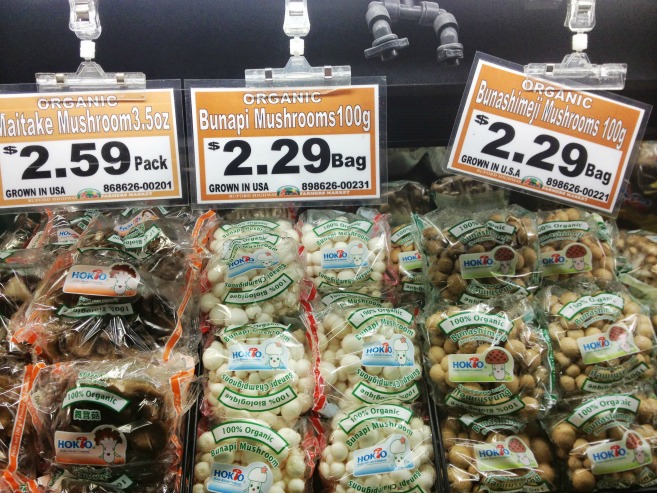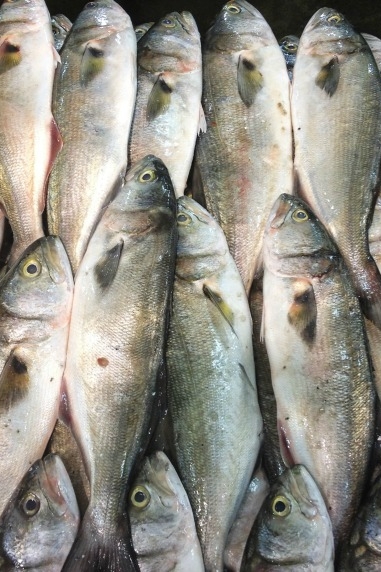It's A Magnificent Big Box World, After All
The people-in-the-know repeatedly mentioned, eyes wide, nods slow for emphasis, “It will make you really realize how limited our normal grocery stores are...” The variety! The fish! We were assured our minds would be blown, all just blocks off the eponymous I-285 exit north of Atlanta— The Buford Highway Farmers Market.
After making it my day-to-day job for the past three years to promote a healthy, vibrant locally-based food system (a system rich with heirlooms, with wild-abandon level of cultivated and gathered variety), and having long ago drunk the Kool-Aid on the limits and inherent failings of our modern, industrial agricultural model— let’s just say I didn’t expect the Buford Highway Farmers Market to make me really realize something new. That’s not coming from a cynical place— rather a worldview where I thought I’d seen a lot.
Let’s get something straight off the bat here. The Buford Highway Farmers Market is not, in fact, a farmers market. It is the United Nations of Food. On steroids. My friend and intrepid edible Upcountry editor Ashley Warlick (not a person lean on food knowledge) and I spent over two hours slow-spiraling through 100,000+ square feet, mouths agape, wandering, backing into each other, pointing, laughing— our own micro-gaggle of Japanese-esque tourists with iPhones and notepads instead of large cameras.
Produce greets you front and center, as well as (in our case) a solo shopper in full burka, a Mexican family of eight as well as a hipster duo armed with their Starbucks. While Luis Miguel circa 1990 (think a Mexican George Michael) crooned across the PA, we waded through rambutan, monstera fruit, uglifruit, fresh lychees, dragon fruit and atulfo mango, all within a few dizzying feet. Everything, and I mean everything, is labeled with its location of origin. I counted 15 varieties of apples (Tentation, Cripps Pink, Ambrosia, Kiku, Embergo, Jazz, Red Del), 25 varieties of peppers, eight choices of eggplant. An entire wall, I guestimated 50 feet long, with carefully prepackaged aromatic Asian greens—potato leaf and snow pea tips, oba (?), sesame leaf—dedicated to seasoning pots of broth, pho, curries. A three tiered display of spiraling garlic scapes formed a column divider. The mushroom section would please even the most discerning myco-phile. And we were impressed by the selection of “Home Mede” tofu (we know what they meant), including Caribbean-style. We had, of course, no idea there was tofu in such places.
I pass a display with six varieties of local honey as the familiar sound of the tortilleria’s mechanical grind and squeak, the smell of roasted corn, pulled me into the next section of the store. I had landed back in Mexico, a home country to me for the better part of four years. The Mexican deli counter was a picture of south of the border and the adjacent selection of various chicharrones (pork rinds elevated to art form) straight out of my days walking the Sunday tianguis street market in San Luis Potosi. I had my first moment of thinking “How could anyone not find a patch of square footage in this place that feels completely and totally like home?” Because if flavor and familiar product can bring comfort regardless of nutritional grade, they also have your Coke, your G2 Gatorade (next to Shikhye rice punch), your Mayfield, your Hot Pockets, your Kraft, General Mills, too. I realized that, from a food culture lens, I had stumbled into the most democratic representation of the United States of America, maybe the whole world. Ever.
We wound on, marveling, through Asian sections including a 70-foot aisle devoted to instant noodles, a dumpling and sushi deli staffed by quiet, focused white-coated masters, European areas where Svetlana and Yulia staffed the classic pastry counter, a wall of Russian beauty products where I counted 10 brands of Russian toothpaste. I noticed a trifecta of 6 foot tall shoppers, all together, all bespectacled in heavy dark frames, casing the Dutch aisle. I was equally delighted to take in the Cowgirl Creamery and Morbier cheeses as I was the Armenian Pomegranate wine selection. Truthfully, I was glad I wasn’t really shopping. I got to be a tourist this first pass, simply soaking it all in (what I actually recommend for your first visit).
And then— the fish. A 200-foot zagging chevron of case after case of the entire ocean. I’m sure one customer prefers Indian mackerel to Norwegian (or vice versa). Choose your carp, any carp: grass, white, buffalo, yellow. Behind the iced trays were four 12-foot wide thousand gallon tanks of live lobster, tilapia and catfish. We sidled up to a father and his son, Georgia born and bred with Chesapeake roots somewhere in their backgrounds, carefully hand- selecting, one by one, their blue crabs to take home for a family boil. “See we call those whities,” Dad explained, the preferred darker-bellied crustaceans indicating heavy back-fin meat. Along with us, the kid was learning the lay of the land.






